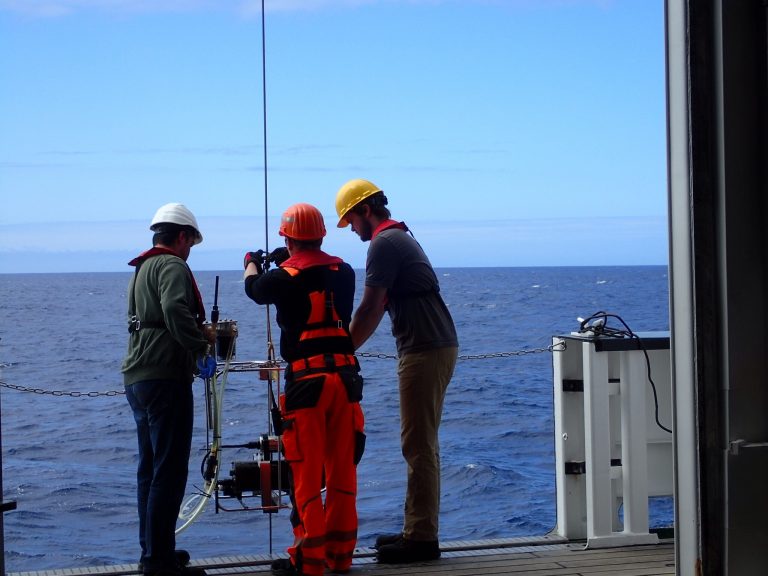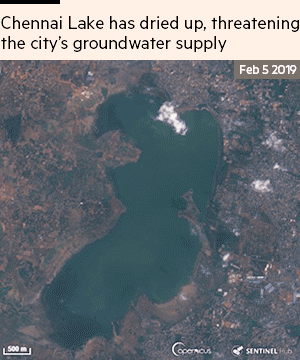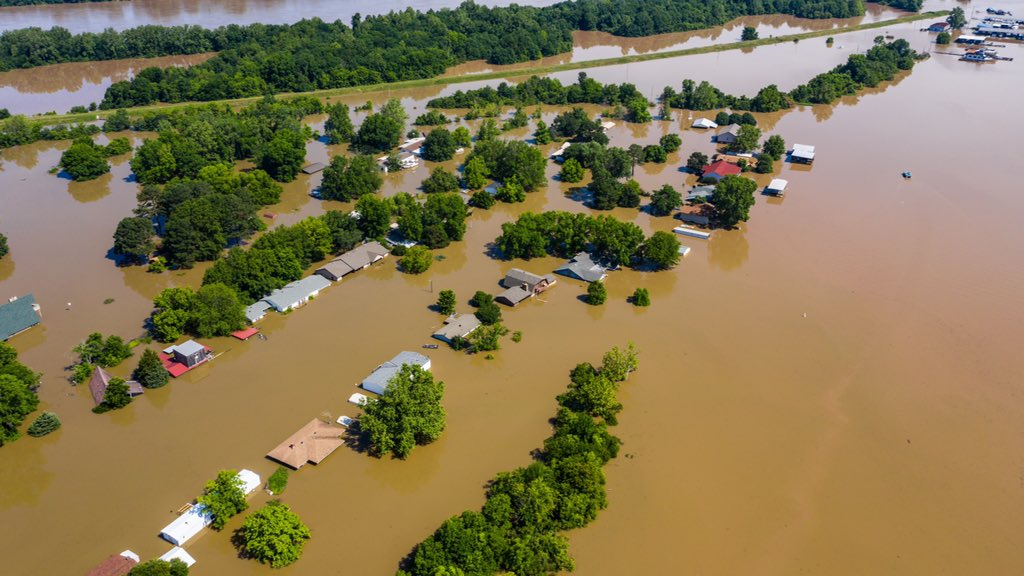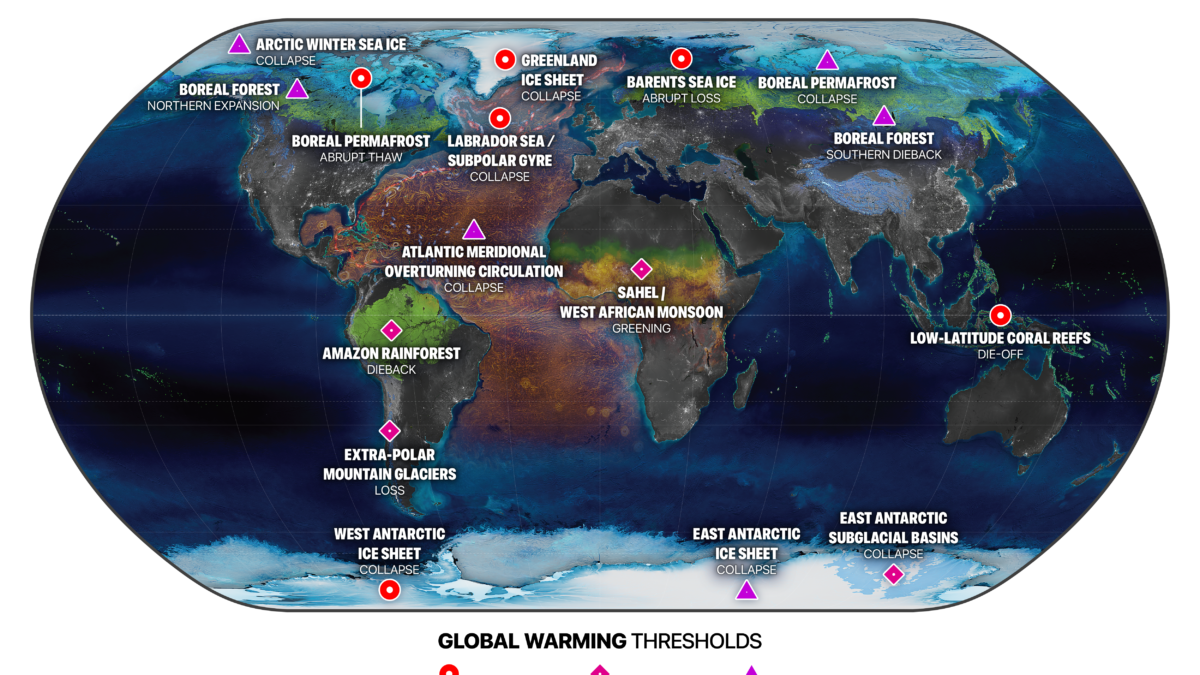As oceans warm, microbes could pump more carbon dioxide back into the air

By Kevin Krajick
29 April 2019
(Columbia University) – The world’s oceans soak up about a quarter of the carbon dioxide that humans pump into the air each year — a powerful brake on the greenhouse effect. In addition to purely physical and chemical processes, a large part of this is taken up by photosynthetic plankton as they incorporate carbon into their bodies. When plankton die, they sink, taking the carbon with them. Some part of this organic rain will end up locked into the deep ocean, insulated from the atmosphere for centuries or more. But what the ocean takes, the ocean also gives back. Before many of the remains get very far, they are consumed by aerobic bacteria. And, just like us, those bacteria respire by taking in oxygen and expelling carbon dioxide. Much of that regenerated CO2 thus ends up back in the air.
A new study suggests that CO2 regeneration may become faster in many regions of the world as the oceans warm with changing climate. This, in turn, may reduce the deep oceans’ ability to keep carbon locked up. The study shows that in many cases, bacteria are consuming more plankton at shallower depths than previously believed, and that the conditions under which they do this will spread as water temperatures rise. The study was published this week in the journal Proceedings of the National Academy of Sciences.
“The results are telling us that warming will cause faster recycling of carbon in many areas, and that means less carbon will reach the deep ocean and get stored there,” said study coauthor Robert Anderson, an oceanographer at Columbia University’s Lamont-Doherty Earth Observatory.
Scientists believe that plankton produce about 40 billion to 50 billion tons of solid organic carbon each year. They estimate that, depending on the region and conditions, about 8 billion to 10 billion tons manage to sink out of the surface ocean into greater depths, past about 100 meters, without getting eaten by bacteria. However, scientists have had a poor understanding of the depths at which CO2 is respired, and consequently, of the rate at which it is returned to the atmosphere. The new study zeroed in on this question, with surprising results.
Using data from a 2013 research cruise from Peru to Tahiti, the scientists looked at two distinct regions: the nutrient-rich, highly productive waters off South America, and the largely infertile waters that circle slowly in the central ocean below the equator in a set of currents known as the South Pacific Gyre.
To measure how deep organic particles sink, many oceanographic studies use relatively primitive devices that passively trap particles as they sink. However, these devices can collect only a limited amount of data over the vast distances and depths of the ocean. For the new study, the researchers instead pumped large amounts of seawater at different depths and sifted through it. From these, they isolated particles of organic carbon and isotopes of the element thorium, which together enabled them to calculate the amount of carbon sinking through each depth that they sampled. This procedure yields far more data than traditional methods do.
In the fertile zone, oxygen gets used up quickly near the surface, as bacteria and other organisms gobble up organic matter. At a depth of about 150 meters, oxygen content reaches near zero, halting aerobic activity. Once organic material reaches this layer, called the oxygen minimum zone (OMZ) it can sink untouched to the deeper ocean. The OMZ thus forms a sort of protective cap over any organic matter that sinks past it. In the deeps, oxygen levels pick up again and aerobic bacteria can go back to work; however, any CO2 produced down that far will take centuries to get back into the air via upwelling currents.
Up to now, many scientists have thought much of the organic matter produced near the surface makes it through the OMZ, and thus most CO2 regeneration would take place in the deep ocean. However, the researchers’ measurements suggested that actually only about 15 percent makes it this far; the rest is converted back to CO2 above the OMZ.
“People did not think that much regeneration was taking place in the shallower zone,” said the study’s lead author, Frank Pavia, a graduate student at Lamont-Doherty. “The fact that it’s happening at all shows that the model totally doesn’t work in the way we thought it did.”
This matters because researchers project that as the oceans warm, OMZs will both spread horizontally over wider areas, and vertically, toward the surface. Under the conventional paradigm, this would allow more organic matter to reach the deep ocean to get trapped there. However, the new study suggests that as OMZs spread, so will the vigorous CO2 regeneration above them. This would counteract any increased trapping of organic matter below the OMZ. Which effect — near surface regeneration or the cap provided by the OMZ — might win out is a question for more research, says Pavia. But the discovery implies that the spread of OMZs might not be as beneficial as previously thought. (At least not for carbon storage; OMZs are harmful, in that they kill off much marine life in what are now important fishing areas.)
Further out, in the South Pacific Gyre, the results were less ambiguous. There is less biologic activity here than above the OMZs because of lack of nutrients, and previous research using sediment traps has suggested that much of whatever organic matter does form on the surface sinks to the cold deeps. Some CO2 regeneration takes place there, but it would take centuries for the gas to resurface. However, the new study found the opposite: there is far more regeneration near the warmer surface than previously estimated by some studies.
This matters because, like OMZs, the South Pacific Gyre and similar current systems in other parts of the oceans are projected to grow as the oceans warm. The gyres will divide these regions into stratified layer cakes of warmer waters on top and colder waters below. And because, according to the study, so much CO2 regeneration will take place in the warm, shallower waters, more CO2 will end up going back into the air over wider regions. And unlike below the nearer-shore OMZs, “there is no counterbalancing effect in the gyres,” said Anderson. “The story with the gyres is that over wide areas of the ocean, carbon storage is going to get less efficient.” (There are four other major gyres: the north Pacific, the south and north Atlantic, and the Indian Ocean.)
The researchers point out that the processes they studied are only part of the ocean carbon cycle. Physical and chemical reactions independent of biology are responsible for much of the exchange of carbon between atmosphere and oceans, and these processes could interact with the biology in complex and unpredictable ways. “This [the study] gives us information that we didn’t have before, that we can plug into future models to make better estimates,” said Pavia.
The other authors of the study are Phoebe Lam of the University of California, Santa Cruz; B.B. Cael of the University of Hawaii, Manoa; Sebastian Vivancos and Martin Fleisher of Lamont-Doherty Earth Observatory; and Yanbin Lu, Hai Cheng and R. Lawrence Edwards of University of Minnesota.
As Oceans Warm, Microbes Could Pump More CO2 Back Into Air, Study Warns
ABSTRACT: Particulate organic carbon (POC) produced in the surface ocean sinks through the water column and is respired at depth, acting as a primary vector sequestering carbon in the abyssal ocean. Atmospheric carbon dioxide levels are sensitive to the length (depth) scale over which respiration converts POC back to inorganic carbon, because shallower waters exchange with the atmosphere more rapidly than deeper ones. However, estimates of this carbon regeneration length scale and its spatiotemporal variability are limited, hindering the ability to characterize its sensitivity to environmental conditions. Here, we present a zonal section of POC fluxes at high vertical and spatial resolution from the GEOTRACES GP16 transect in the eastern tropical South Pacific, based on normalization to the radiogenic thorium isotope 230Th. We find shallower carbon regeneration length scales than previous estimates for the oligotrophic South Pacific gyre, indicating less efficient carbon transfer to the deep ocean. Carbon regeneration is strongly inhibited within suboxic waters near the Peru coast. Canonical Martin curve power laws inadequately capture POC flux profiles at suboxic stations. We instead fit these profiles using an exponential function with flux preserved at depth, finding shallow regeneration but high POC sequestration below 1,000 m. Both regeneration length scales and POC flux at depth closely track the depths at which oxygen concentrations approach zero. Our findings imply that climate warming will result in reduced ocean carbon storage due to expanding oligotrophic gyres, but opposing effects on ocean carbon storage from expanding suboxic waters will require modeling and future work to disentangle.
SIGNIFICANCE: Plankton in the sunlit surface ocean photosynthesize, fixing dissolved CO2 into particulate organic carbon (POC). This POC sinks and is respired, releasing CO2 into subsurface waters that are sequestered from the atmosphere. The depth scale over which this regeneration happens strongly affects atmospheric CO2, but estimates to date have been sparse and challenging to interpret. We use a new geochemical method to determine POC regeneration depth scales at unprecedented resolution in the South Pacific Ocean, finding shallow regeneration in both oxygen-deficient zone and oligotrophic gyre settings. Our results imply decreased future ocean carbon storage due to gyre expansion and two opposing feedbacks to expanding oxygen-deficient zones, the net effects of which on ocean carbon storage require future research.
Shallow particulate organic carbon regeneration in the South Pacific Ocean


